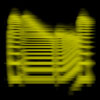| Author
|
First octave sine wave replacement for kicks: Is it worth it and why
|
br0d
IsraTrance Junior Member

Started Topics :
12
Posts :
355
Posted : Jun 12, 2004 09:48
|
Ok, about time I started one. 
Do you filter your extremely low frequency content (40-80Hz) out of your kicks and replace it with carefully controlled sine waves, and why? If so, where do you highpass, and with what slope? 100Hz? 80Hz? 18db? 24db? If you engineer your kick before your bass, do you give any thought to how to pitch this sine wave? Why or why not? Why not use a triangle wave? Too many partials conflicting with the rest of the bass? If you program your bass first, do you tune the sine underpinning to the key of the bassline? Maybe in a unison? Masybe an octave (usually too high but definitely a nice gimmick?) Fifths? Thirds? Which interval becomes too dissonant to allow the kick and bass to gel well? Major third? Minor third? Do you know the physics behind why that is? (I don't.)
Also, using envelope mode LFO and such on Access Virii--useless for kicks? Is it insanity to not sample your kicks? I think so. Not only are the LFOs on synths like the virus quirky and inconsistent with their envelope generation, but also there are sometimes problems with the way the virus handles its filters and negotiation of polyphony, which can cause kick dropouts (has been acknowledged by Access.) Also, failing to sample your kicks does not give you the opportunity to compress and munge them in any way.
With sythesized kicks, where the pitch mod takes longer than 200ms or more, do you sometimes use the SX (or Logic) Inspector track predelay to send the kick track back a few milliseconds, so that the low frequency content of your kick hits earlier and thus does not clash with the low frequency content of your bassline? Can this timing problem be instead mitigated by the above Sine Wave Replacement (SWR) Therapy?
Do you think a good bass synths with fast, concave filters like a Minimoog can be further enhanced and made more percussive through the use of a compressor with a moderately fast yet not immediate attack time? Have you ever read this article?
http://www.soundonsound.com/sos/nov99/articles/synthsecrets.htm?session=7b0e594886a8a5736a04befaa1be9f48
What do you think of recursive modulation and convex envelopes, as discussed here:
http://www.access-music.de/downloads.php4?product=viruskb&file=167
(Virus programming tutorial in English)
Which synths feature it?
Do you use distortion processors (like the fabulous Quadrafuzz) to pitch your kicks and basses harmoniously with one another? Have you ever tried it and/or noticed how it tends to make things tighter once you lift the distortion?
Do you group your bass and kick together, and then process them mutually with a dynamics processor? If so, which kind? Is compression appropriate, or is a read-ahead limiter like L1 or L2 more transparent because of it's ARC control? Is there really any benefit to using a fixed release on grouped low end?
Do you find that there are any steadfast or common rules to bass and kick leveling in a psy mix? Does the oft mentioned rock and roll standard balance value of -5db/-5db for kick/bass work well in psy, or is that a little too aggressive for digital recording with the typically beefy and spectrally rich low end rhythm instruments found in psytrance? Do you find yourself setting your bass higher in the mix, or your kick higher? Do you highpass out the <40Hz content of each of these? Individually? Or together? Or do you highpass on the stereo out buss or in mastering? Do you cling to the common mythology that infrasonics are actually necessary within a mix given that headroom is limited?
Do you believe that it is possible to achieve tighter first and second octave rhythms with the use of MIDIGates? Would this imply that these gates can close faster than your synth's VCA? Is sampled bass and sample editing truly the best method for producing rapid basslines? At what point does it stop being a limitation of the synth or editor, and start becoming a limitation of the sub enclosure? Have you ever wondered what the resonant frequencies of the most common subwoofer models are? Are you aware of the correlation between driver directionality, frequency, and power? Are you a physicist? Do you want to be? I don't.

        .::New Boole CD The Vital Few out now::. .::New Boole CD The Vital Few out now::.
http://www.boole.org/audio/index.php#tvf
http://www.boole.org/audio/snippets/Boole-The_Vital_Few-Some_Snippets.mp3 |

|
|
Mike A
Subra

Started Topics :
185
Posts :
3954
Posted : Jun 12, 2004 18:47
|
A lot of food for though here - gotta experiment on some of your techniques here 
|

|
|
saxopholus

Started Topics :
0
Posts :
79
Posted : Jun 12, 2004 19:15
|
what an amazing post!!!
there is no simple answer but I think in theory that one should make the bass and kick at the same time so that they work together and not against each other. you may have a great kick and a great bass but one may cover the other. there is a lot to be said for just boosting the eq at centre frequency of the kick and then cutting the same frequency out of your bass noise with a relatively high q. as for the tuning, i think I would just listen till it sounds good rather than any particular method. maybe one should have them an octave apart so they don't cross eq wise. hmm...
I did hear that some people use a ducking side chain on their kick, so that when the kick sounds the bass level drops and then is restored when the kick is over. only needs to be a couple of db to be effective they say.
as for the rest of the q's!! :$ do u actually use quadrafuzz on your kicks? wouldn't that make them a bit flappy? wouldn't some tape compression/distortion give a fatter sound.
Sax James. |

|
|
Colin OOOD
Moderator

Started Topics :
95
Posts :
5380
Posted : Jun 12, 2004 19:16
|
You're too clever for me Br0d.
I create my kicks in Sound Forge (using sine wave synthesis), alter them in Battery to fit the timing and general bass content of the track and EQ them with Waves REQ. I find in this way that compression is unnecessary and, in fact, detrimental to a clean, sharp, punchy kick.
I have recently started to layer my basses, with each layer being responsible for a particular frequency range or effect. Sub tends to come from Pentagon, with higher ranges from different synths depending on what I'm after. Processing varies but always includes some compression.
Kick and bass are balanced by ear, eye and finger, using the level meters on my Promix 01 and a light touch on the seals of the cones of my monitors. To avoid LF content of kick and bass clashing I tend to avoid coinciding them; I always do a test bounce of kick and bass and look at the waveform to ensure there is clear air between all events. If kick and bass must coincide for musical reasons I find it advantageous to cross-compress, although I tend to avoid group compression in these cases as the dynamics of the kick and bass may be very different.
When using MIDI gates care must be taken to ensure that the attack and release phases are precisely timed in order to avoid HF artifacts on the tails of LF events. I've not got this to work quite yet but I'm sure it's possible, perhaps using a quantised bounce of the bassline to avoid any possible phase and timing differences in the start and ends of notes.
        Mastering - http://mastering.OOOD.net :: www.is.gd/mastering Mastering - http://mastering.OOOD.net :: www.is.gd/mastering
OOOD 5th album 'You Think You Are' - www.is.gd/tobuyoood :: www.OOOD.net
www.facebook.com/OOOD.music :: www.soundcloud.com/oood
Contact for bookings/mastering - colin@oood.net |

|
|
Colin OOOD
Moderator

Started Topics :
95
Posts :
5380
Posted : Jun 12, 2004 19:19
|
|
saxopholus

Started Topics :
0
Posts :
79
Posted : Jun 12, 2004 19:24
|
|
you're probably right Colin I've just no idea how that would work, not having tried it and also in theory. |

|
|
br0d
IsraTrance Junior Member

Started Topics :
12
Posts :
355
Posted : Jun 12, 2004 19:25
|
Quote:
|
On 2004-06-12 19:19, Colin OOOD wrote:
I think he might have been talking about using QF as a tool to match pitches and lengths of kick and bass, then removing the plugin for playback. I might be wrong though.
|
|
Yep. That was it. Although sometimes it's fun to leave it turned on...  |

|
|
br0d
IsraTrance Junior Member

Started Topics :
12
Posts :
355
Posted : Jun 12, 2004 19:37
|
Quote:
|
On 2004-06-12 19:15, saxopholus wrote:
there is a lot to be said for just boosting the eq at centre frequency of the kick and then cutting the same frequency out of your bass noise with a relatively high q. as for the tuning, i think I would just listen till it sounds good rather than any particular method. maybe one should have them an octave apart so they don't cross eq wise. hmm...
I did hear that some people use a ducking side chain on their kick, so that when the kick sounds the bass level drops and then is restored when the kick is over. only needs to be a couple of db to be effective they say.
Sax James.
|
|
I don't typically go for boosts, I prefer the holistic approach to sound engineering...get the sounds right from the getgo. Of course this can be hard if you really want to use a sound that already exists, and in that case of course you are going to have to shape it with an eq. Boosting your average plugin eq creates phase inconsistencies which tend to become audible, especially when you boost more than a few db. And who wants their options to be limited to a few db? An exception to this may be the Waves Linear Phase EQ which is designed to compensate for that, but even then, it's just not a technique I use (I don't really use bell cuts or notches either, only shelving.)
I have used a ducker/keyed gate on kick/bass, and my conclusion wrt that is also holistic, there is no reason to use a ducker for normal dynamic control when compression, balance, and good engineering would do. Plus it's hard to set up and tweak, it's one of the more subtle dynamic techniques out there, it's really hard to hear. Of course if the ducker is being used to create a noticeable "sucking" effect (like Daft Punk  ) then it can be very useful. But you know, you can do that with a compressor too...If someone gave me a kick and bass and said "make these work together" I might consider a ducker to manage the beats where they coincide, but some people prefer to noodle with a paragraphic EQ instead, and then compress them together. ) then it can be very useful. But you know, you can do that with a compressor too...If someone gave me a kick and bass and said "make these work together" I might consider a ducker to manage the beats where they coincide, but some people prefer to noodle with a paragraphic EQ instead, and then compress them together. |

|
|
saxopholus

Started Topics :
0
Posts :
79
Posted : Jun 12, 2004 19:49
|
nice tips. i guess when I said boosting and cutting it was only a few db's just for some extra clarity. but then you're right if they are done properly in the first place - no need. hmm a lot to learn for me....
thanks again for all the tips and advice. |

|
|
br0d
IsraTrance Junior Member

Started Topics :
12
Posts :
355
Posted : Jun 12, 2004 21:42
|
Quote:
|
On 2004-06-12 19:16, Colin OOOD wrote:
You're too clever for me Br0d.
|
|
Aw shucks. 
Quote:
|
I create my kicks in Sound Forge (using sine wave synthesis), alter them in Battery to fit the timing and general bass content of the track and EQ them with Waves REQ. I find in this way that compression is unnecessary and, in fact, detrimental to a clean, sharp, punchy kick.
|
|
I've done the FM thing in Forge and the kicks never have enough snap for me. They really boom well but they are not resonant enough. My best kicks have come off my virus. It's a personal preference thing though, I've still used the forge kicks. What might be interesting is to layer the virus "Spirallianz kick" (which is essentially just a slightly modified virus preset aka D95 LowKick) with one of the boomier forge kicks, I have never tried that...
Quote:
|
I have recently started to layer my basses, with each layer being responsible for a particular frequency range or effect. Sub tends to come from Pentagon, with higher ranges from different synths depending on what I'm after. Processing varies but always includes some compression.
|
|
Heheh see for me, that sub comes from Soundforge. A sine is a sine, and I have better EQ and overdrive processors outside of VSTi than I have inside.
Quote:
|
Kick and bass are balanced by ear, eye and finger, using the level meters on my Promix 01 and a light touch on the seals of the cones of my monitors. To avoid LF content of kick and bass clashing I tend to avoid coinciding them; I always do a test bounce of kick and bass and look at the waveform to ensure there is clear air between all events. If kick and bass must coincide for musical reasons I find it advantageous to cross-compress, although I tend to avoid group compression in these cases as the dynamics of the kick and bass may be very different.
|
|
Lately I've just been recording basses and adjusting their lengths with the fade handles. It's much tighter than outboard MIDI and more accurate than relying on VSTi VCAs. When it comes to accuracy, it's all about the audio IMO.
Agree on the compressors, sometimes they need to coincide and when they do, they can get unruly real fast.
Quote:
|
When using MIDI gates care must be taken to ensure that the attack and release phases are precisely timed in order to avoid HF artifacts on the tails of LF events. I've not got this to work quite yet but I'm sure it's possible, perhaps using a quantised bounce of the bassline to avoid any possible phase and timing differences in the start and ends of notes.
|
|
The Steinberg one really sucks. I use Miga, but I saw another one on here I wanna try out. |

|
|
Colin OOOD
Moderator

Started Topics :
95
Posts :
5380
Posted : Jun 14, 2004 20:07
|
|
Amygdala
Amygdala

Started Topics :
12
Posts :
175
Posted : Jun 15, 2004 00:04
|
Wow... You guys are making numbers instead of music. Don't you ever get tired of that? I think I'm pretty down with the theory, but sometimes it's really healthy (for me) to just turn up the gain, and let analog overdrive/distortion speak for itself 
- But duely respect to you, for your very interesting ideas! I thought I would just take a reality check on this discussion, hehe 
- Amygdala |

|
|
br0d
IsraTrance Junior Member

Started Topics :
12
Posts :
355
Posted : Jun 15, 2004 08:01
|
Good music is a balance of substance and technique. An abundance of one element does not automatically imply a lack of the other. It might just imply more activity.
|

|
|
fuzzikitten
Annunaki

Started Topics :
40
Posts :
603
Posted : Jun 15, 2004 16:00
|
Colin, I am intrigued - how do you use a physical touch on the speaker cone to help you with frequencies. I mean, it makes sense to a degree as I play my bass more by feel than by ear, but I'm a little confused as to what you are actually feeling for by touching the cone. Is there a sweet spot to feel for? Will it cause more or less cone vibration?
And for the record, this is one of the best kick/bass threads I've ever seen! It's really expanded how much control I can have over the 'base' of my track, and given me some great ideas for things to try.
Thank you!
-Alex |

|
|
Colin OOOD
Moderator

Started Topics :
95
Posts :
5380
Posted : Jun 16, 2004 00:36
|
I touch the cone to give me another perspective on the relative balance of kick and bass, and as a way of making sure there isn't too much ultra-low sub. For me, PERSONALLY, IMO, etc, etc, I feel the kick drum should be the most promient element of a trance track, and in the absence of a sub-bass unit or 15K PA system in my bedroom, I like to use as many methods as I can to make sure this is the case. Spectrum analysis, the meters on my mixer, touching the cones and, of course, listening through as many speakers as I can are all part of this.
        Mastering - http://mastering.OOOD.net :: www.is.gd/mastering Mastering - http://mastering.OOOD.net :: www.is.gd/mastering
OOOD 5th album 'You Think You Are' - www.is.gd/tobuyoood :: www.OOOD.net
www.facebook.com/OOOD.music :: www.soundcloud.com/oood
Contact for bookings/mastering - colin@oood.net |

|
|
|